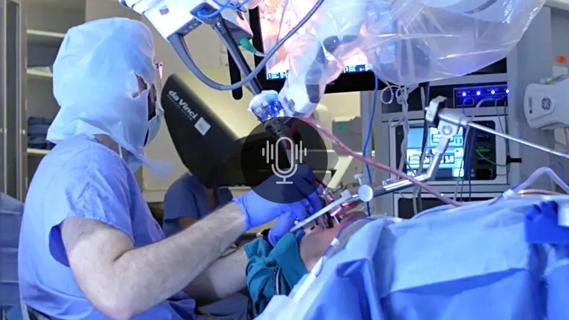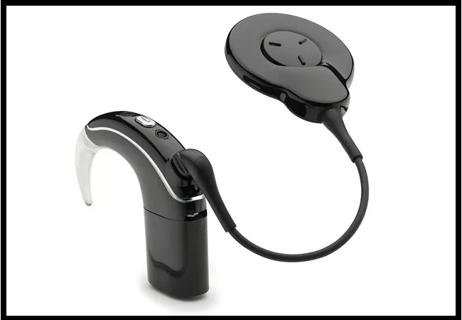Advertisement
An answer may be seen by looking at the teeth

Advertisement
Cleveland Clinic is a non-profit academic medical center. Advertising on our site helps support our mission. We do not endorse non-Cleveland Clinic products or services. Policy
Cleveland Clinic otolaryngologists and audiologists have often recognized the importance of dentistry in the management and diagnosis of otalgia and other ear symptoms, such as subjective tinnitus and ear stuffiness. In a recent chart review of 73 Temporomandibular Disorder patients seen within a two month period at Cleveland Clinic’s Head & Neck Institute’s Dentistry Department, 41% had complaints of otalgia, ear stuffiness and/or tinnitus. Of these 30 patients, 15 patients were referred by and cleared for ear pathology from the Cleveland Clinic Head & Neck Institute prior to referral for a comprehensive Temporomandibular Disorder (TMD) consultation.
Chart review showed that 90% of the total number of TMD patients acknowledged diurnal or nocturnal bruxism and/or had clinical evidence of tooth attrition from clenching or grinding of their teeth. It has been reported that parafunctional habits such as grinding and clenching is centrally mediated and has a familiar tendency often times seen to occur within families. Parafunctional habits are also affected by stress, anxiety, depression, alcohol, smoking and some anti-anxiety mediations, such as SSRIs. As noted during the chart review, 36 of the 73 (49%) TMD patients were currently taking medication for anxiety, depression or receiving other psychotropic medications.
Parafunctional habits including grinding and clenching of teeth, habits such as cheek chewing, gum chewing, ice chewing and nail biting require masticatory and cervical muscle function that can result in myositis or propagation and activation of myofascial trigger points in the jaw and neck muscles.
The masticatory and cervical muscles most often involved during these behaviors include the sternocleidomastoid, masseter and lateral pterygoid muscles. Masseter muscle trigger points can refer to the ear, eyebrow, molar teeth and lower mandible. Unilateral tinnitus has been shown to be associated with trigger points from the deep masseter and lateral pterygoid with modulation of tinnitus in some patients with the clenching of their teeth.
Advertisement
Sternocleidomastoid trigger points are associated with poor head/neck posture and can refer pain to the frontal, cheek, eyebrow, vertex, ear and throat regions. In addition, SCM trigger points can result in proprioceptive disturbances such as dizziness and autonomic phenomena, including symptoms involving the eyes and sinuses. The lateral pterygoid muscle trigger points refer to the preauricular area and can be misdiagnosed as intracapsular TMJ arthralgia. Ear stuffiness symptoms related to medial pterygoid hyperactivity can explain the presence of ear blockage in patients when otitis media and otitis externa have been ruled out by ENT.
The medical profession can provide a great service to the patient with chronic episodic ear pain during a clinical exam by observing occlusal wear on teeth during the intraoral exam, evaluation of medications that may indicate a presence of comorbidities of stress/anxiety and providing a cursory muscle palpation exam of the neck and jaw muscles. Trigger point jump signs to taut bands within a muscle could indicate the source of dysfunction and a possible referral pain source. Auscultation and palpation of the TMJ’s may indicate a possible overload to the masticatory system, and this finding should warrant subsequent referral to dentistry.
Providing information to patients to aid in their recognition and discontinuation of parafunctional habits can be life-changing for some patients. Education on proper head and neck posture, awareness programs directed to reduce daytime clenching and other habits, and the understanding of myofascial trigger point referral can provide self-awareness initiatives to our patients.
The contribution from parafunctional habits and myofascial pain is an important consideration in the answer to enigmatic ear pain, dizziness, tinnitus and other seemingly unrelated symptoms. Dentistry could prove to be a very effective partner in the management of these patients.
References:
Advertisement
Advertisement

A new single-port system well-suited for oropharyngeal cancer treatment

A reduction in the number of incisions for implantation simplifies the procedure and improves patient experience

How advanced blood testing is changing treatment paradigms

Hearing implant program continues to grow

Study compares hearing aids and combination devices

Rapid recoveries and positive outcomes underscore the value of this operation

A safer therapeutic option for patients